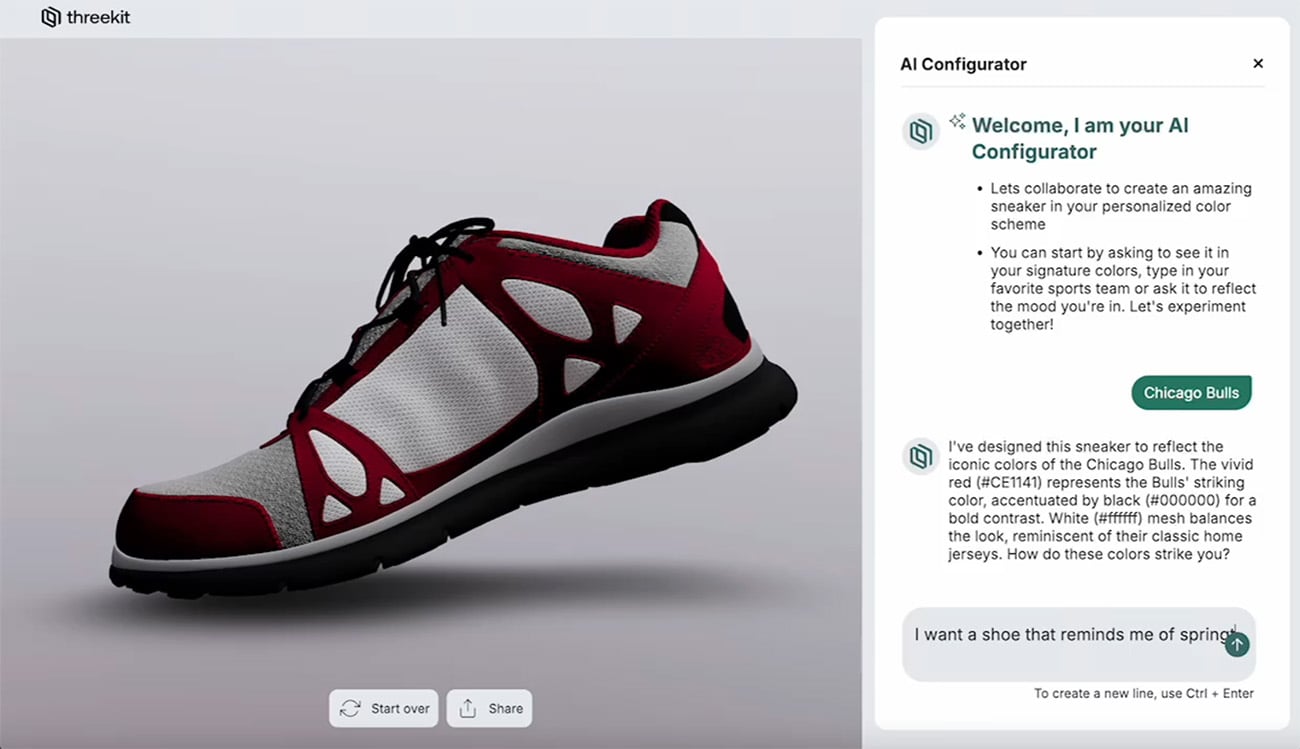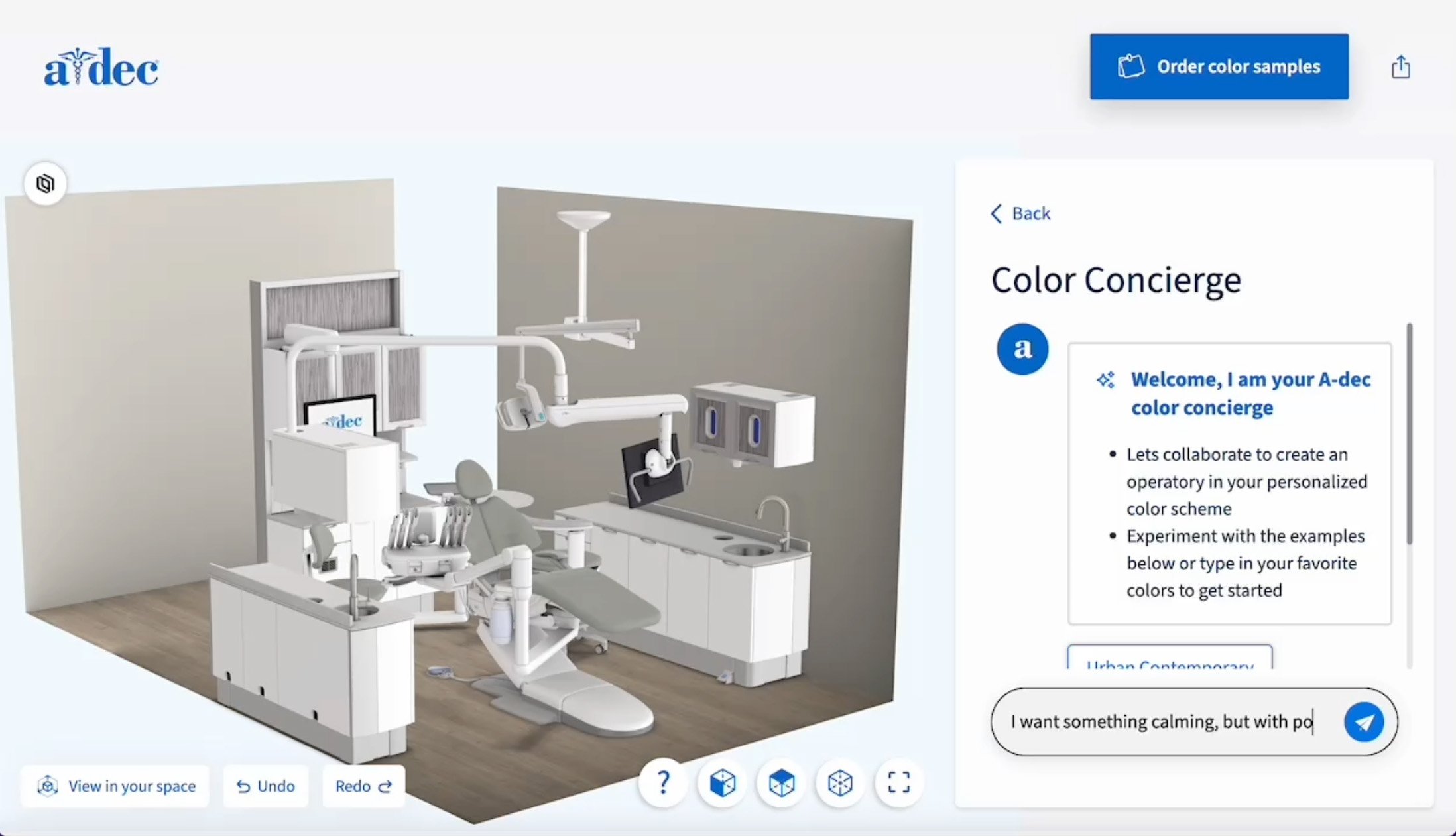Roadmap For Retailers: How to Implement AI-Guided Selling
Summary / TL;DR
- Guided selling acts like a digital sales associate, simplifying the buying process.
- A successful rollout starts with auditing and optimizing product and customer data, then layering AI into existing systems.
- Our platform uses semantic search, NLP, and confidence messaging to boost conversions and average order values.
- Case studies show up to a 40% conversion lift and a 20% increase in Average Order Value (AOV) when guided selling is used effectively.
Guided Selling Intro
Retail leaders have the unique challenge of needing to increase growth while keeping acquisition costs low. Shoppers, meanwhile, expect fast, personalized experiences. Left to navigate endless product grids, many abandon carts or buy elsewhere, thus perpetuating the retailer's headache.
Guided selling helps solve this problem. It functions like a digital sales associate, interpreting buyer intent, narrowing options, and giving customers confidence in their choices by showing how the product(s) will look on them or in their space, or which products can be bundled to create a fuller experience.
The "try before you buy" methodology behind guided selling leads to measurable impacts in conversions and sales. From our own experience, our clients have seen up to a 40% conversion lift and a 20% higher average order value when guided selling is added to their buying journey.
If your team's interesting in adopting AI-guided selling, here’s a roadmap for implementing guided selling effectively, based on what we’ve seen work when helping retailers scale.
Step 1: Audit and Clean Your Product + Customer Data
AI only works as well as the data behind it. Auditing your product and customer data ensures the foundation is reliable.
How to audit product data to prepare for AI guided selling:
- Export your catalog from your PIM or commerce system into a spreadsheet.
- Check for blanks in key attributes such as size, material, and color.
- Look for inconsistent naming (“navy” vs. “dark blue”), which confuses both AI and customers. Streamline for consistency.
- Flag duplicate or inactive SKUs so that the product catalog reflects your most up-to-date inventory.
- Customer data checks: Review how purchase history, browsing behavior, and returns data are captured and stored.
- Identify gaps where information is missing.
- Optimization (after audit): Standardize attribute values.
- Enrich products with missing information where possible.
- Clean up customer records to enable personalization.
This step ensures guided selling recommendations will be accurate and trustworthy as you move forward with implementation.
Step 2: Define Use Cases and Roles
Guided selling can improve many parts of the buyer’s journey. We encourage retailers to start by identifying where decision fatigue (analysis paralysis!) or cart abandonment is highest for their customers.
To find cart abandonment rates, you can use a tool like CartFlows to help identify these friction points, manually track via goals and funnels in Google Analytics, or simply divide your completed purchases by number of carts.

Common use cases of guided selling include:
- Helping buyers find the right product faster through intent recognition.
- Suggesting relevant accessories or add-ons at checkout.
- Bundling complementary products into “complete the look” or kit offers.
- Reducing manual research for internal sales teams through semantic search and natural language queries.
Step 3: Select Guided Selling Tools and Set Requirements
Not all guided selling platforms are created equal. At a minimum, a solid guided selling platform should include features like AI-driven recommendations, an intuitive UI and user chat interface, personalized buying experiences, and the ability to guide customers through your product catalog based on their preferences.

Advanced features (like Threekit's platform) can further enhance the experience by providing deep learning features such as:
- Semantic search: Understanding queries in natural language, not just keywords.
- NLP + confidence messaging: Interpreting intent and guiding customers with reassuring language.
- Bundling logic: Suggesting combinations that increase basket size.
- Composable integration: APIs that connect seamlessly into existing front- and back-end systems.
Step 4: Pilot Implementation
Rather than rolling out across your entire catalog, begin with a pilot program to see how guided selling works (or doesn't work) for your business. Good pilot candidates include:
- Product categories with high variation, such as furniture or apparel.
- Configurable goods, where customers often get overwhelmed.
- High-abandonment categories, where guided support can reduce drop-off.
Step 5: Train Teams and Build Adoption of Guided Selling Tech
Guided selling is not just technology; it’s a cultural shift. Teams must understand how to use the insights it generates. Commonly impacted teams include:
- Merchandising: Adjust assortments and highlight high-performing products.
- Marketing: Use guided selling insights to target promotions and email campaigns.
- Support: Lean on AI recommendations to answer customer questions more effectively. Training sessions, playbooks, and early success stories help build momentum.
Step 6: Monitor, Optimize, and Scale
Guided selling is most powerful when continuously refined. After launching your guided selling solution, we recommend to:
- Use GA4 or a similar analytics tool to track key metrics, such as conversion rate, average order value, cart abandonment, and return rate.
- Run A/B tests to see which recommendation formats or placements perform best.
- Refine product tagging and attributes where recommendations fall short.
- Expand guided selling into new categories, chatbots, service portals, or mobile apps once the pilot succeeds.
The Business Impact of AI Guided Selling

There have been numerous studies done on the positive impact and adoption of guided selling on retailers' bottom lines. Here at Threekit, we've seen our clients enjoy success from implementing guided selling:
- Up to a 40% conversion lift after integrating guided selling into front-end and back-end workflows.
- 20% higher average order value by bundling complementary products into guided recommendations.
- Reduced cart abandonment by giving buyers confidence to complete their purchase.
- These outcomes are possible because guided selling directly addresses choice overload, uncertainty, and lack of personalization (three of the biggest barriers to digital sales).
Conclusion
Guided selling gives retailers a direct way to move from vague “AI initiatives” to measurable business growth. By auditing data, defining use cases, selecting the right tools, piloting carefully, and scaling with optimization, teams can quickly see a meaningful impact.
We have seen firsthand how guided selling transforms both the buyer’s journey and the retailer’s bottom line. Shoppers get confidence. Retailers get more conversions, bigger baskets, and stronger loyalty. That is the power of guided selling when done right.



